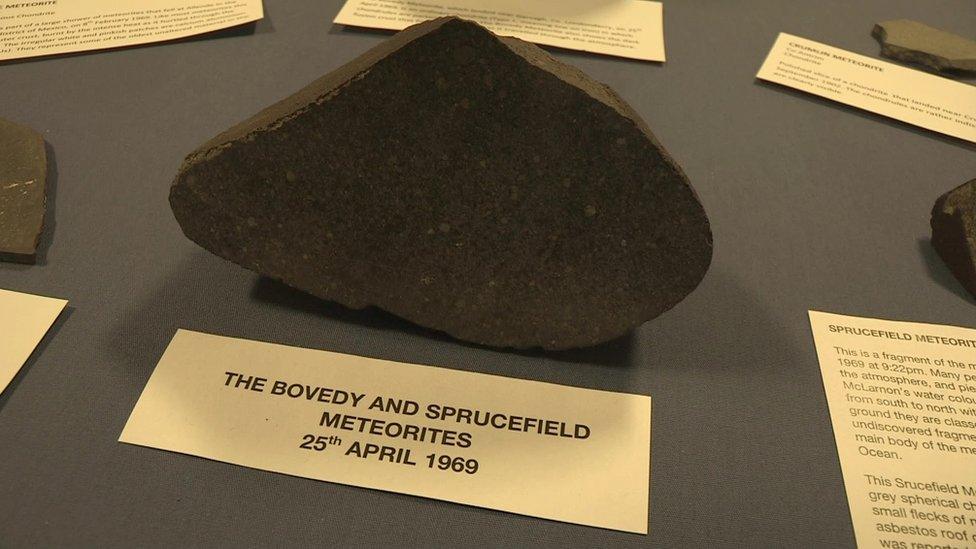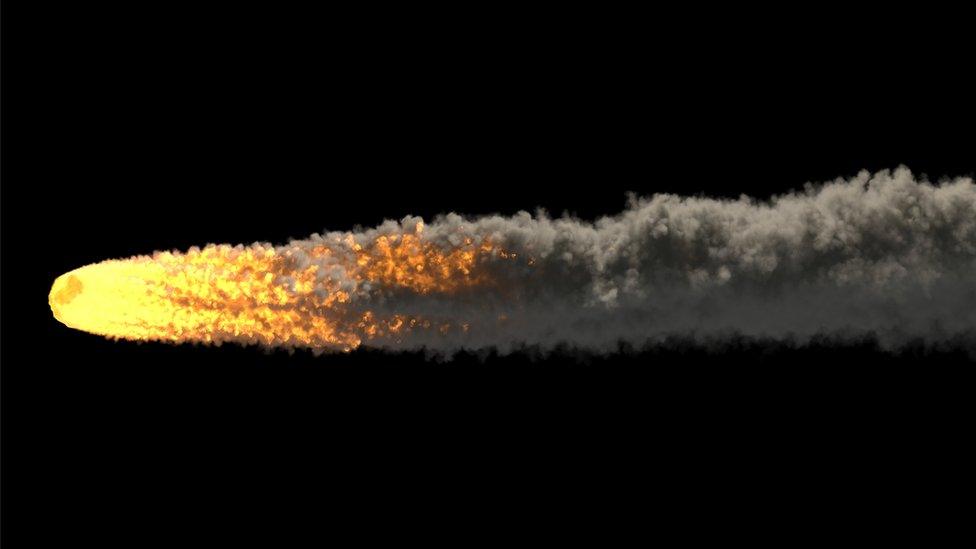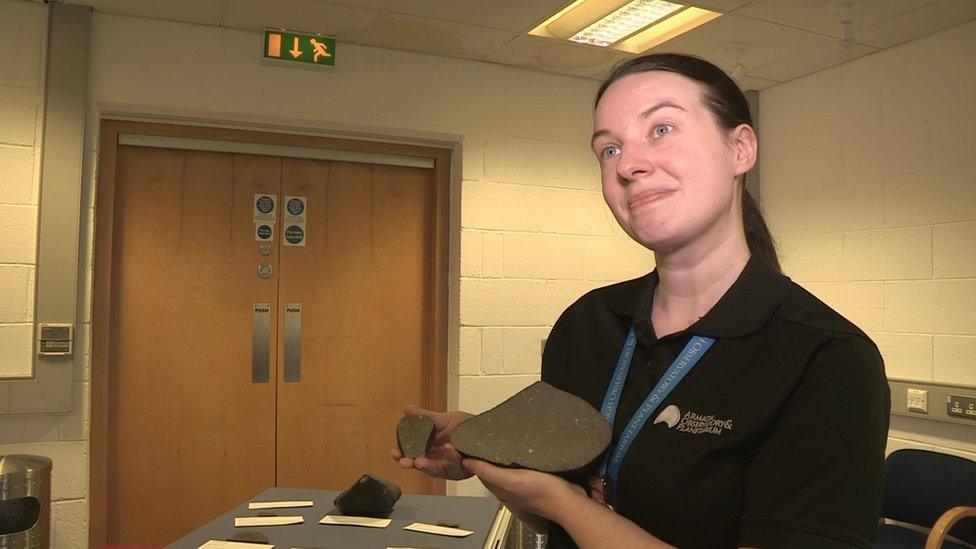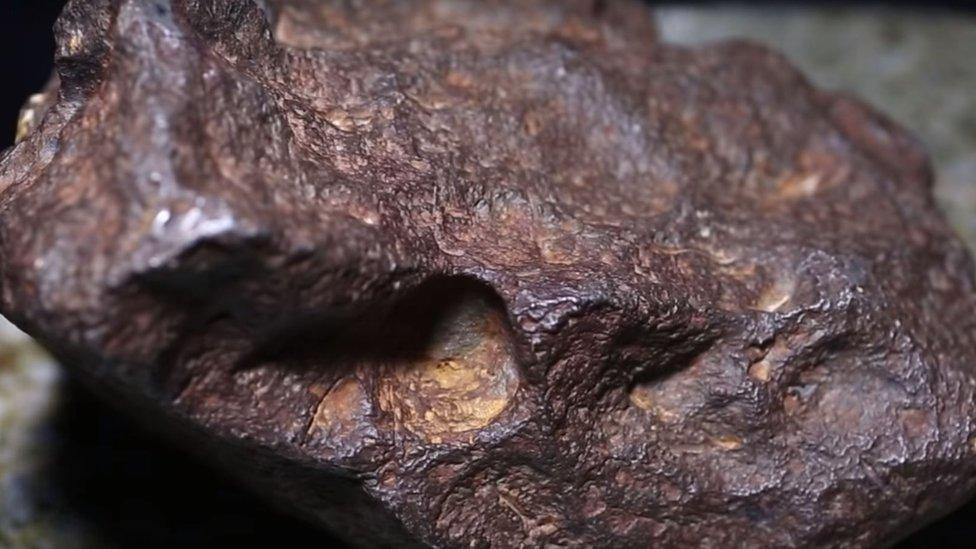The Bovedy meteorite: 50 years on
- Published

The Bovedy meteorite first appeared over the Bristol Channel as a blue-green fireball
In April 1969, as riots raged on the streets of Londonderry, a visitor from outer space crash landed in a field a few miles from the city.
The Bovedy meteorite entered the atmosphere over the Bristol Channel as a blue-green fireball and sped across Wales releasing a sonic boom, before breaking up in an orange flash over Northern Ireland.
Fifty years on, the Armagh Observatory and Planetarium is celebrating the arrival of the meteorite, parts of which are in its collection.
One piece of the rock broke off over Lisburn in County Antrim, burning through an asbestos roof at the police central stores in Sprucefield.
The biggest chunk landed on farmland in Bovedy, County Londonderry.

Artwork: The fireball was seen by a farmer as it passed overhead
The scientific journal, Nature, explained how the farmer, Mr Gilmore, "described the meteoroid coming directly towards him and passing overhead, estimated 2.5 times the size of the full moon".
The meteorite was discovered by local people two days later.
'Massive fireball'
Meanwhile, in west Belfast then 14-year old Noel Connor was playing football in the street with his friends when they saw the sight.
"Out of nowhere, the sky just opened up and a massive fireball came across it," he recalled.
"We stood bewildered as to what had happened. We later found out it had broken the sound barrier.
"At that time, in April you didn't hear explosions across Belfast. By August that was a common sound," he added.
Mr Connor said a lady called Eileen Brown recording birdsong in her back garden in Bangor inadvertently became the first person to record the sonic booms of a meteorite on magnetic tape.
Five years ago Mr Connor who is now an artist and writer contacted the planetarium and got to hold it.
"For an artist to make that physical link with something that was so profound in your childhood, it almost marked the end of innocence," he said.

Heather Alexander of the Armagh Observatory displays the meteorite fragments
Heather Alexander, the operations manager at the planetarium, explained the rocks are very valuable.
"We're not allowed to tell you how much they are but it's more than my house," she said.
The Ulster Museum in Belfast has a chunk of the rock and there are small pieces in other collections around the world, but Armagh has the lion's share.
"Whenever it landed in '69 there was a bit of an issue about who would have got this piece of meteorite so luckily we were able to get it. The farmer in Bovedy gave us this part and we were able to obtain the Sprucefield meteorite as well," Ms Alexander explained.

Meteorite facts
Meteorites are fragments of rock that fall to Earth from space. A meteor becomes a meteorite when it lands.
Scientists estimate that 44 tonnes (44,000kg) of meteoritic material falls on Earth each day.
The ancient Egyptians used meteorites to create high status objects such as jewellery.
In February 2013, a fireball streaked through the clear morning sky in Russia's Chelyabinsk region. Hundreds of people were injured when it exploded.

The planetarium is holding a series of events on Thursday 25 April to mark the anniversary of the meteorite.
"We're encouraging people who remember the Bovedy in the night sky to come and see it," said Ms Alexander.
"Schoolchildren at the time drew pictures and sent them in to us," she said.
- Published15 February 2013

- Published5 October 2018

- Published18 April 2018
